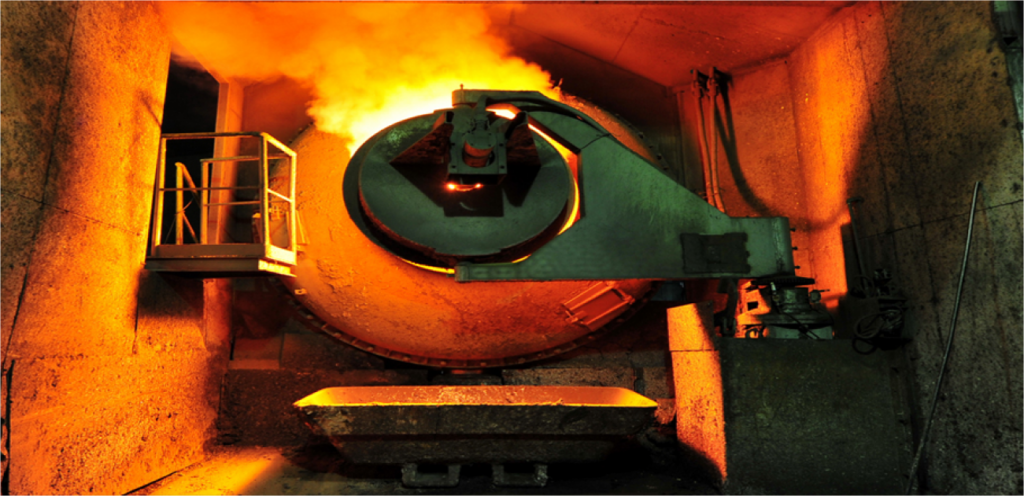A comprehensive analysis of environmental provisions applicable to the Company and the relevant exposure of the Company, a structured analysis of all risks pertinent to the Company (intensity of impairment and probability of occurrence), and the creation of a comprehensive risk map, assessed and monitored systematically and continuously by business, technological and regulatory developments, by the Company's professional and managerial factors, along with the assistance of expert external consultants, under the quarterly supervision of a Company Officer, said for the purpose of constantly and continuously updating the overall risk map of the Company, monitoring the various risks derived from there and establishing policies to reduce said risks to the level of risk capacity, as shown by the Company Officer, with ongoing monitoring of the implementation of the required corrective steps.
We are mapping all existing environmental regulations applicable to the Company.
Appointing an ecological risk management officer at the Company and receipt of ongoing aid from external experts as required.
Quarterly update of legislative amendments and opinions on relevant rulings by external legal counsel.
We are mapping all existing environmental regulations applicable to the Company.
Appointment of an ecological risk management officer at the Company, and receipt of ongoing aid from external experts as required.
Quarterly update of legislative amendments and opinions on relevant rulings by external legal counsel.
Environment emissions

Hazardous materials
Infrastructure
Reports
Approvals
Registrations
Adopting a structured method for assessing the various risks in a hierarchy of multiplying risk intensity (on a scale from 1 to 4), a probability of risk occurrence (on a scale of 1 to 4), and a comprehensive risk assessment (on a scale of 1 to 16).
Documentation of a complete monthly risk map, including structured and residual risks as a result of the steps taken.
Determining the order of steps for risk reduction (priority of treatment from high risk to low risk).
Determination by the Company Officer of the maximum risk capacity that cannot be exceeded for proper management of environmental risks by the Company - no more than 10% of the risks in the overall risk map shall be at a medium level or higher (a score of more than 6), and not more than 2% or more, at a greater level (a score of more than 9).
Risk reduction steps - the Company Officer will monitor the reduction of the scope of the risks and will set a quantitative target from time to time to reduce the number of risks.
Establishing risk management work procedures - conducting a routine procedure for updating the comprehensive risk map, convening a monthly forum for environmental risk management at the corporate headquarters level, quarterly reporting by the Company's Environmental Risk Officer, and a quarterly discussion held by the Company Officer, ad hoc reporting to the Company Officer on the occurrence of an event having an exceptional effect, not in the ordinary course of business.
Determining work routines commensurate with the capacity to be determined.
Determining the manner of risk management and ongoing supervision through the professional and managerial factors at the Company level, and with the aid of the Company's external consultants and determining periodic enforcement audits.
The Company is committed to adopting a comprehensive policy of commitment to the continuous management and monitoring of environmental risks as a result of the Company's operations, in recognition of the supreme importance of risk management optimization vis-à-vis the Company's future.
Allocation of resources - Allocation of resources required to maintain health, safety, and the environment.
Compliance with legal requirements - Compliance with all legal requirements, in full cooperation with the authorities to prevent safety and environmental risks vis-a-vis all Company operations, both at the Company's facilities and off-site.

Awareness and involvement - Full responsibility and commitment by the Company's employees and managers to ensure safety, environmental, and product quality.
Commitment, fairness, and good neighborliness - A commitment to fair and just management, stemming from responsibility to the Company's employees, neighboring communities, the Company's sites, and the social fabric in which the Company operates.
Supervision - A periodic re-examination of the Company's policy and technology, by Company management and its adaptation to the forefront of knowledge, legislation, and environmental conditions.
Safety, health, and environmental quality - Safety in manufacturing and transportation, protecting employee health and the environment. All this while adhering to the Company's high production, quality, and profitability standards.
Initiative and caution - Taking a proactive approach to safety and the environment, which advocates preventive measures in lieu of post-event responses.
Process sustainability - Constant efforts to improve the Company's environmental and socio-economic functioning and establish quantitative implementation and monitoring targets.
Environmental management - Gradual adoption of a comprehensive environmental management system for all Company sites, production facilities, and the workshop.
Energy conservation and prevention of climate change - A proactive approach to energy conservation and a reduction of greenhouse gas emissions, including the use of fuel substitutes.
Recycling and raw material savings - Recycling of waste batteries, reducing waste generated during manufacturing, waste recycling, reducing the risks of waste generated at the plant. Finding uses for the waste of processes as raw material while adhering to all environmental standards.
Quality and Product Warranty
Product quality - Development and manufacture of solid and durable products that follow client requirements and the LME.
Professional information and its dissemination - Support for training and information activities on energy conservation, safety, and the environment, for all employees and managers
Hakurnas' environmental commitment is also reflected in its extensive financial investments. Hakurnas invests in the ongoing development and maintenance of monitoring, pollution prevention, cleaning, and environmental technologies. The advanced environmental regulations and the environmental commitments that Hakurnas has accepted, based on a recognition of the importance of the issue to its future development, require investments and ongoing expenditures of millions of Shekels yearly.
Hakurnas strives to constantly advance its environmental risk management by identifying trends and technologies to reduce
emissions, risks, etc.
© 2024 Hakurnas Company